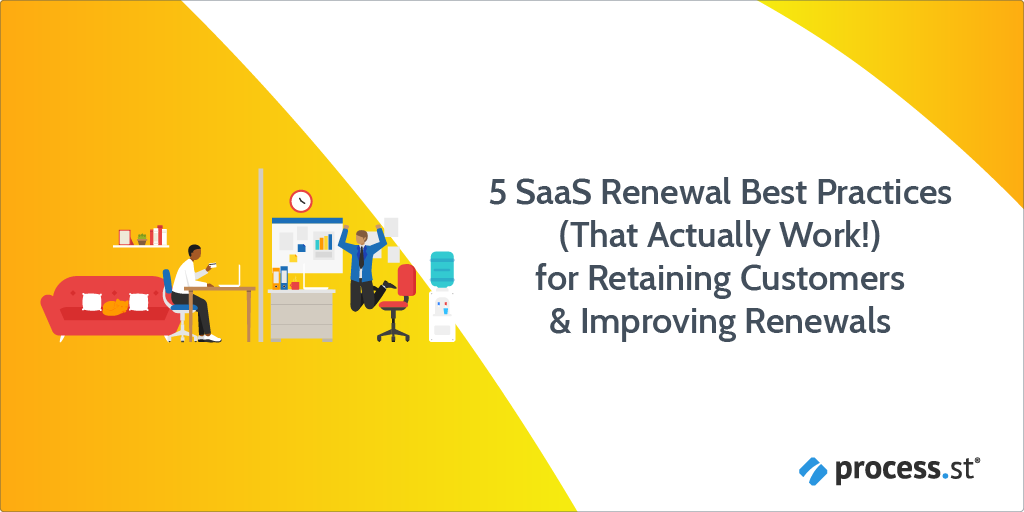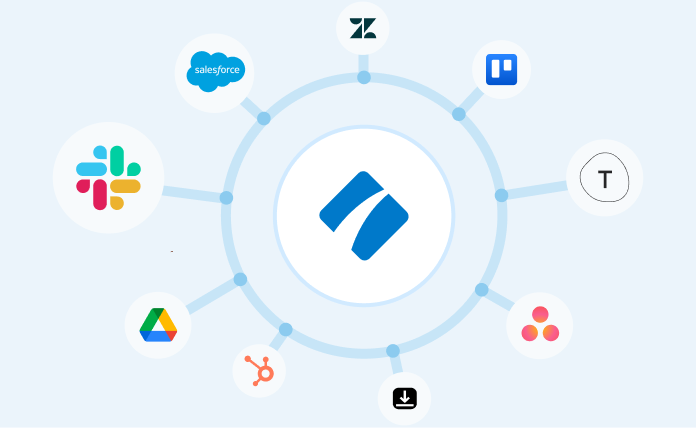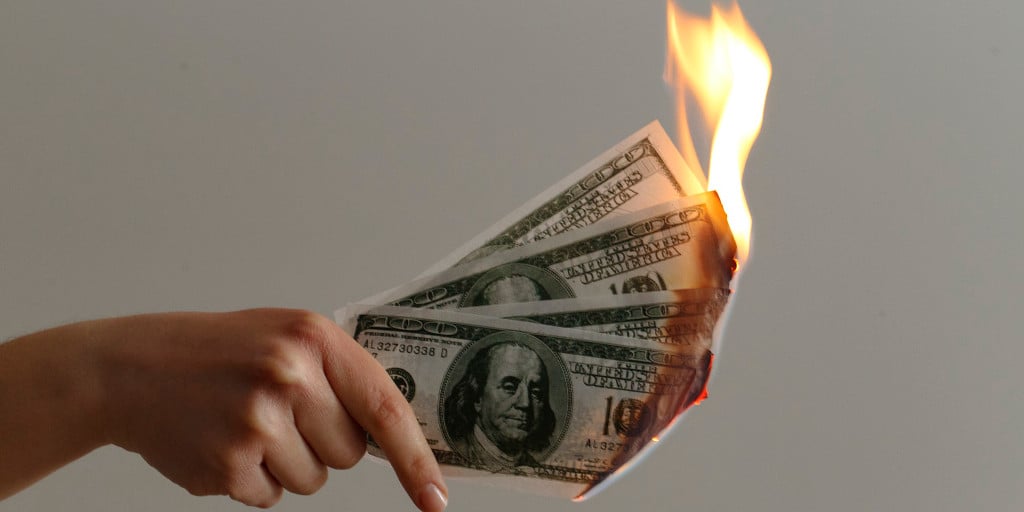
Every 28 days, a lovely Hermes delivery-person brings a crate of the world’s finest craft beer to my house.
But if it were up to me, I wouldn’t receive these beer boxes at all.
In early 2020, I tried to unsubscribe from [REDACTED] — a monthly beer subscription company — as I felt it was an unnecessary expense. I soon realized, though, that unsubscribing would be a Herculean task. There was no way to cancel digitally, and if I wanted to stop my subscription altogether, I’d need to ring them up during their (very limited) business hours.
Having to go through all that rigmarole dissuaded me from unsubscribing.
Annoyingly, I’m still receiving my delicious craft beers a year later.
These frustrating (read: unethical) tactics to stop customers from unsubscribing have been deployed by all manner of companies — from those in the food and drinks industry, all the way to those in the tech world.
And while it may seem tempting for your SaaS company to do similar, it’s nothing more than a quick win when, in reality, you should be focusing on improving the customer lifecycle. After all, it’s positive business-to-customer interactions that’ll stop people from wanting to unsubscribe in the first place.
That’s why, in this Process Street post, I’ll be discussing SaaS renewal. I’ll go over the definition of SaaS renewal, explain why customers think about unsubscribing from SaaS products, and provide you with actionable SaaS renewal best practices that’ll stop folks from hitting that unsubscribe button. (Providing you have one!)
Read through these sections to get in the know:
- What SaaS renewal means & how to figure out your SaaS renewal rate
- 5 reasons why customers unsubscribe from SaaS products
- 5 tried-and-tested SaaS renewal best practices for boosting renewals
You’re about to become a SaaS renewal pro — let’s cheers to that!
What SaaS renewal means & how to figure out your SaaS renewal rate
‘SaaS renewal’ is a term relating to Software-as-a-Service companies that operate with a subscription-based financial model. Basically, a SaaS renewal is when a SaaS customer renews their subscription, either automatically or manually. You may have previously heard the terms ‘subscription renewal,’ ‘SaaS subscription,’ or ‘tech subscription,’ but they all mean the same thing, by-and-large.
What you’ll have certainly heard of — and seen first-hand — is that subscription-based financial models have had a tremendous uptick in the last decade. Research by the ever-insightful consulting firm McKinsey found that:
“The subscription market has grown by more than 100% each year over the last five years, and rakes in $2.6 billion annually.” – Annie Nova, Why you find it hard to cancel that subscription
And in the SaaS space in particular, the subscription model reigns supreme.
As the other stellar consulting and advisory firm Gartner discovered:
“All new software entrants and 80% of historical vendors are offering subscription-based business models.” – Gartner, Moving to a Software Subscription Model
To boot:
“By 2022, 53% of all software revenue will be generated from a subscription model.” – Manju Bansal, Why Platforms Are Critical When Building For The Intelligent Enterprise
The subscription model isn’t some new-fangled fad that will disappear as quickly as it appeared on the scene. It’s been around for donkey’s years (since the 17th century, in fact), and will soon become the de-facto financial model for modern-day, SaaS companies.
To get a stronger grasp on the specific metrics and numbers concerning SaaS renewals, software companies will figure out those details with what’s known as a ‘SaaS renewal rate.’
The SaaS renewal rate
The ‘SaaS renewal rate’ is a measure of how well any given SaaS company is retaining its customers. However, it isn’t calculated in a uniform way, and, as such, is conducted differently by differing companies.
Not to make this post too quote-heavy, but the team at SaaSOptics explain how varying SaaS companies can discover the metrics behind their SaaS renewal rate in diverging ways:
“Renewal Rate can mean different things to different people. For instance:
- Customer Renewal Rate is a rate of renewal of customers, typically using a count of customers that cancelled and those that did not.
- Revenue Renewal Rate is a rate of renewal of revenue. Unspecified, “revenue” can mean GAAP revenue or a normalized revenue number such as MRR or ARR.
- MRR Renewal Rate is a rate of renewal of MRR, a normalized revenue number assigned to a recurring revenue transaction.”
To figure out the rate itself, all you need to do is a couple of sums (namely a few divisions and multiplications) until you reach a percentage that tells you your SaaS renewal rate, and therefore how well (or how badly) you’re retaining customers!
For more on the math involved, check out this post from SaaSOptics.
Renewal vs. retention
The word ‘renewal’ has cropped up numerous times in this post already, as has the word ‘retention.’
But where does one end and the other begin?
Before I steam ahead with the rest of the post, let me clear up any doubt.
‘Renewal,’ in this context, refers to a subscription being renewed. ‘Retention,’ meanwhile, concerns a customer remaining a customer, them choosing your SaaS product over a competitor’s, and them not hitting the unsubscribe button. Basically, you can’t have repeat renewals without retaining your customers overall.
Seeing as any prior confusion has now been done away with, it’s time to look at why, exactly, customers would even think about unsubscribing from SaaS products.
5 reasons why customers unsubscribe from SaaS products
When you’re incredibly close to a SaaS product — as in, you’re working on it every week (and probably the weekends, too), it’s hard not to think everybody should be subscribing to it, and any current subscribers would be doing themselves a disservice by unsubscribing.
Take me as an example.
As somebody who’s been working at Process Street for the last two years, I know how beneficial our business process management software is for businesses — especially tech companies who are past the small startup stage.
Here’s our nifty tool in action:
For those of us working in tech, it’s easy to become so enamored with what we’re working on that we fail to see the customer’s reality, and the drivers that lead them to think about not only not renewing their subscription, but also unsubscribing completely.
To tackle a low SaaS renewal rate, it’s imperative to understand the common reasons why renewals don’t happen.
Think of this as a 101 class if you’re a small SaaS startup, and as a refresher if you’re working on a larger, more well-known SaaS product.
1. Poor product adoption
In layman’s terms, ‘product adoption’ is the process of somebody becoming aware of your product, and then once they’ve used it themselves, adopting it. That is, they become a fully-fledged user and customer.
Now, SaaS companies want — no, need — high rates of product adoption to sustain long-term success. Because, as the team at Accenture quite rightly say:
“Product adoption is one of the largest renewal factors. Both the number of users on the product and their usage can benefit the likelihood to renew.” – Lauren Steinitz, Customer renewals: Why customers keep coming back
If users are finding the product confusing, buggy, and — let’s face it, not particularly aesthetically-pleasing — it will naturally result in low product adoption rates, meaning users won’t renew.
2. Software performance issues
Having software performance issues — from features not working as intended, to the whole tool going offline during peak hours — can have a massively detrimental impact on whether users decide to renew or not.
While the example I’m about to draw on isn’t from a SaaS product per se, it’s something the majority of us working in the SaaS space are familiar with: Cyberpunk 2077.
Cyberpunk 2077, developed by CD Projekt RED, whose portfolio consists of lauded games such as GWENT and The Witcher 3, was meant to be the best game of 2020. Set in a dystopian cityscape that’s reminiscent of Bladerunner, your character has to ensure their survival in a cut-throat city, whose inhabitants are “obsessed with power, glamour and body modification.” And seeing as it mixed open-world role-playing action, à la Grand Theft Auto, with futuristic aesthetics, what wasn’t there to love?
IGN and many other influential tech- and gaming-orientated publications certainly loved the game. Or, they loved the demos that CD Projekt RED had given them, at least.
When the full version of Cyberpunk 2077 was finally released to the public in December 2020 (and after years of delays), the reception couldn’t have been worse.
All over the internet, players vented their immediate frustration through social media posts, YouTube videos, and articles. The game was plagued with game-breaking bugs, stopping the story from progressing. For players on consoles, the graphics were so bad that the game was physically unplayable. And this was what happened if you were lucky enough to actually boot up the game itself.
It was only a matter of time before the memes arrived. The most prominent meme concerned the ‘T pose,’ where NPCs in the game would randomly stand with their legs straight and arms stretched out to the side. Nightclubs full of people would suddenly all stand in the ‘T pose,’ which made the scene look more like some kind of ritual than a club. When driving a motorcycle or car, your character would suddenly rise upward, standing defiantly in the ‘T pose’ (and sometimes, somehow losing their trousers in the process).
While many players regretted spending money on Cyberpunk 2077, it was at least a one-off payment (and, in fact, refunds were opened up days after Cyberpunk 2077’s release). But if Cyberpunk had been released on a subscription model — like GTA online, or MMORPGs like World of Warcraft — then the majority of the player-base would’ve outright canceled their subscriptions within hours.
Suffice to say, if people are spending money on digital products, they expect — and rightly so — for those products to work properly. In the SaaS space, if a piece of software is having issue after issue, or simply isn’t working, it’ll drive down the SaaS renewal rate considerably.
3. Product gaps
Product gaps.
No, I’m not talking about product opportunity gaps here. I mean a SaaS product failing to provide the useful, innovative features and in-app gizmos that competitors are flaunting, and thereby leaving huge gaps in their product.
While it’s always good for those in the SaaS space to launch an MVP as soon as possible (in line with the ‘move fast and break things’ mantra), not having the kind of internal features that users expect will only harm your SaaS renewal rate. After all, why would they stick around and pay for a product that isn’t working for them when they could jump ship instead?
It’s in the next section where I’ll cover SaaS renewal best practices in detail, but when it comes to product gaps in particular, I don’t think it’d hurt to first give a little insight into how we go about features at Process Street.
In our company Slack, we have a channel dedicated entirely to feature requests. It’s where we post the messages from kind folks (like you!) who write in asking us to change a little something here, or add a little feature there. Due to our product and customer success team having frequent contact with our user base, we know exactly how our users feel about our product, and how they’d like to see it develop in the future.
It’s from this information that the engineering team can decide what to tackle next. For instance, we heard from many busy CEOs and managers that use Process Street that an approvals feature — where they could approve or reject items submitted by others with the click of a button — would be super helpful.
So what did we do?
We built approvals!
FYI, here’s how approvals work.
If product gap is impacting your SaaS renewal rate, engage with users (or even would-be customers) to find out what to build next.
4. Difficulty unsubscribing
The very act of unsubscribing from a service or product has become increasingly hard. (As demonstrated by my failed attempt at unsubscribing from the beer subscription service.)
But, when I think about it, every other time I’ve noticed that a company has purposefully made it difficult for me to unsubscribe, I’ve become even more incensed to not give them my money. In an attempt to show the product or service provider that I don’t appreciate these user-unfriendly — and even unethical — practices, I make it my mission to hunt down that unsubscribe or cancel button.
Don’t be like the companies that do this.
Trust me, it can backfire spectacularly.
5. Payment method problems
Credit and debit cards expire, get lost, and are, for a myriad of reasons, replaced.
And for SaaS companies operating with a subscription model, this causes big $$-related problems.
As Patrick Campbell, the CEO and co-founder of ProfitWell, a tool that helps businesses achieve faster recurring revenue growth, says:
“20-40% of your churn is actually absolutely needless, stemming from failed, expired, and delinquent credit cards. Let me put that data in perspective for you. If your churn rate is currently 5%, then one to two percentage points of that churn exists for an absolutely needless reason. You’re pointlessly losing a lot of money every month.” – Patrick Campbell, How to optimise your payment strategy to prevent involuntary churn
Most folks are simply too busy to remember to update their payment details on X day of Y month of Z year, so, in this instance, a helpful email reminder a month or two before their card expires is super useful.
Similarly, an email to notify users if a payment hasn’t been successful means they’ll be aware of the issue at hand, helping them to sort out the problem and to renew.
5 tried-and-tested SaaS renewal best practices for boosting renewals
With the ‘why’ covered, let’s tackle the part you’ve all been waiting for: the ‘how.’ How, exactly, it’s possible to boost SaaS subscription renewals and keep money coming in month after month.
Now’s not the time for me to dilly-dally, so I’ll get right to it with 5 (game-changing) SaaS renewal best practices.
1. Understand your customers
Pop quiz!
What kind of person (or business) uses your SaaS product? How do they use the tool? What was their adoption journey? What are the issues (if any) they’re finding when using your tool?
Admittedly, these are big questions; they’re the kind that require a SaaS company to do a bit of soul searching.
However, doing these customer deep dives is more than worth it. It can flip your SaaS renewals from zero to, well, a two-digit figure with zero at the end of it rather than at the front!
That’s because the knowledge gained from truly understanding your customers can push you into taking the right renewal-focused actions. For instance, seeing as the information can be used cross-departmentally, it could help customer success know that they may need to do more customer training during onboarding. To boot, it could inform marketing that their on-site content needs to concentrate more on that product itself, rather than broader topics.
Essentially, by understanding your customers — who they are, what they do, how they feel, the steps they take or don’t take — you’re able to provide them with the tools, services, and help they need. All of which persuades them to renew, time after time.
2. Automate the customer lifecycle
Automation is a wonderful thing.
It can save time, money, and labor — this is why 57% of employers, according to the folks at Willis Towers Watson, understand that automation improves human performance and productivity.
Why not introduce a little automation when it comes to the customer lifecycle?
Automating an email campaign during the onboarding stage, for example, can keep your product in people’s consciousness. This means they’re less likely to forget about your product outright, and more likely to adopt it.
More importantly though, it’s crucial to automate the renewal process itself. Manual renewals = extra work for everybody involved — and in today’s hectic world, we don’t have enough time as it is. Make it simple for your users and your business by ensuring subscription payments are taken out automatically at the same time each month (or week).
A word of caution: just don’t overdo the number of automated emails, notifications, and the like that you send! You wouldn’t want to overload them to the point where they cease using your product out of annoyance.
3. Set up the option for Direct Debit payments
This quick but important hack builds on the previous tip of automating the renewal process — setting up the option for Direct Debit payments.
As already mentioned, credit and debit cards expire. But what doesn’t expire is bank accounts themselves. This means that subscriptions that are set up as Direct Debits won’t be halted, and will always go through each month. (The reason being is that it’s a bank-to-bank payment system.)
So, on top of automating the renewal process, make sure that users can set up Direct Debits from the get-go, too!
4. Be personable and empathetic
Whether it’s through automated emails, live-chat messages, or calls that are happening in real-time, the way a SaaS company’s employees interact with customers and potential customers alike is key. Feeling like a company doesn’t value you, or that they aren’t taking the issues you raise seriously is nothing but a renewal killer — both in and out of the SaaS world.
To illustrate, here’s another anecdote.
(This one will be shorter, I promise.)
I used to play World of Warcraft, the aforementioned MMORPG that runs on a subscription model. I was something of a veteran, having played for more than a decade, meaning that I gave Blizzard, the company that created World of Warcraft, an absolute ton of money over the years. So much, in fact, I don’t want to do the mental math to work out the total sum.
However, I stopped being a customer after a bad customer support experience.
Specifically, I wrote an in-game ticket to get help with a game-breaking login issue. But, from the response I received, it was clear that the customer support employee clearly hadn’t read my message, to the point where their response just didn’t correlate with the issue I was having. Coincidentally, a few months earlier, Blizzard decided to fire their full-time customer support staff and outsource it to a general customer support company.
It made me realize that the people who took over the customer support roles didn’t have the required knowledge to help me with the issue, or any other problem that I’d have in the future. It also caused me to think, “well, if this is how Blizzard operates as a company nowadays, that doesn’t bode well for the game itself.”
So I unsubscribed.
And that was that.
The takeaway here, then, is clear: listen to your users, treat them well, and empathize with any issues they’re having.
5. Personalize, personalize, personalize
Personalization = happy customers.
For example, you know how, when you walk into a clean, comfy hotel room, there’s usually a mint or a chocolate on the pillow? Perhaps even a little note, welcoming you and whomever you’re staying with to the hotel? Or maybe even another welcome message sprawled on the in-room TV, with your name in a big, bold font?
They’re little touches in the grand scheme of things, yes, but they go an incredibly long way. They show the customer that the staff has made an effort to make them feel welcome and at home in their home-away-from-home.
If you want to up your renewal rate, you need to be doing the digital equivalent of putting chocolates on the pillows of your customers.
Mention the customer by name in all emails, ask how repeat webinar attendees are doing, hell — even wish people a happy birthday when they turn a year older! (And give them a little discount code or another freebie, too.)
Basically, foster a relationship with customers through personalization. (This HubSpot post on customer intimacy is especially helpful, if you’re looking for extra tips on how to go about it properly.)
Just make sure to avoid the common marketing fail of sending batch emails that open with “Hey there, %name!” instead of the recipient’s actual name.
Phew.
That’s several tried-and-tested SaaS renewal best practices covered. In addition to these tips and tricks, you’ve also found out why people think about unsubscribing in the first place, and how to work out your SaaS renewal rate.
All that’s left for you to do now is put everything you’ve learned here today into action.
Who knows, perhaps I’ll even become a subscriber of your SaaS product soon!
And if you enjoyed this post, make sure to check out more of our content, such as:
- The Harvard Churn Management Algorithm to Boost Profits 115%
- How to Reduce Churn and Save Your Doomed SaaS Product
- 5 Mind-Blowing Things We Learned About Our SaaS Price Model
- How to Build a SaaS Product 2x Faster Without Hiring a Tech Team
- The Complete Guide to Customer Success for SaaS Companies
Do you have any extra SaaS renewal best practices you’d like to share with the Process Street community? If so, write them down in the comment box below.







 Workflows
Workflows Forms
Forms Data Sets
Data Sets Pages
Pages Process AI
Process AI Automations
Automations Analytics
Analytics Apps
Apps Integrations
Integrations
 Property management
Property management
 Human resources
Human resources
 Customer management
Customer management
 Information technology
Information technology






Thom James Carter
Thom is one of Process Street’s content writers. He’s also contributed tech-related writing to The New Statesman, Insider, Atlassian, G2, The Content Marketing Institute, and more. Follow him on Twitter @thomjamescarter.